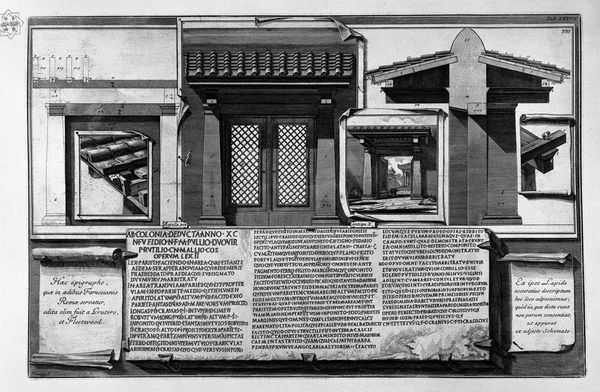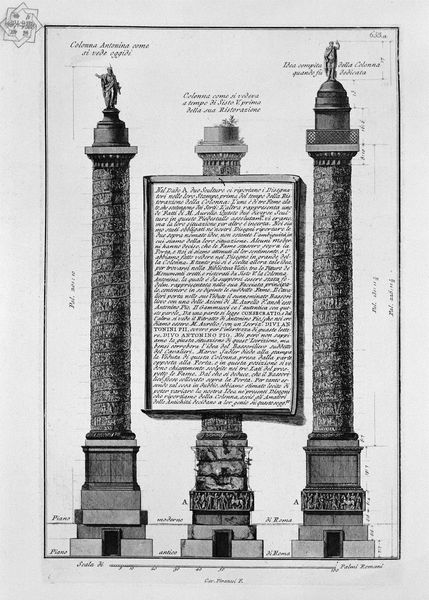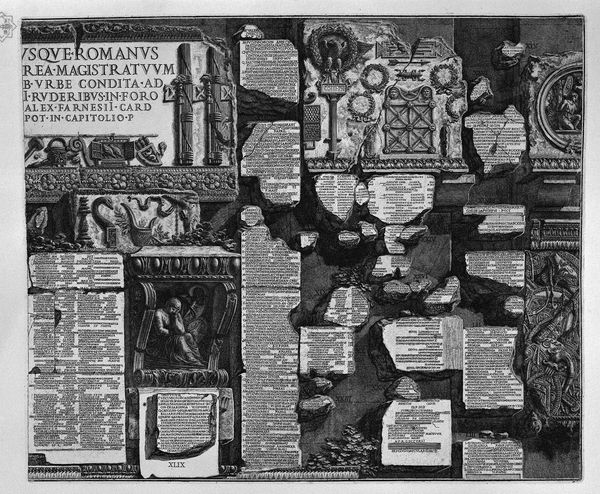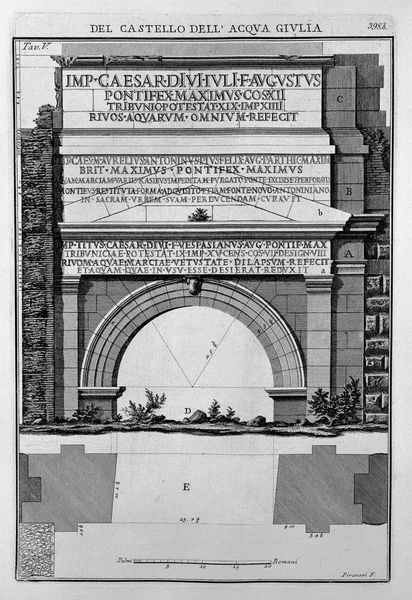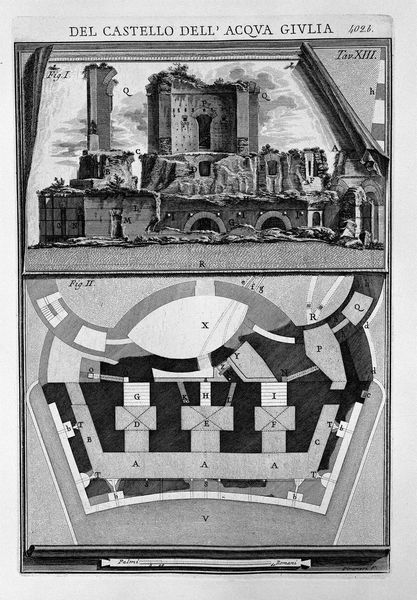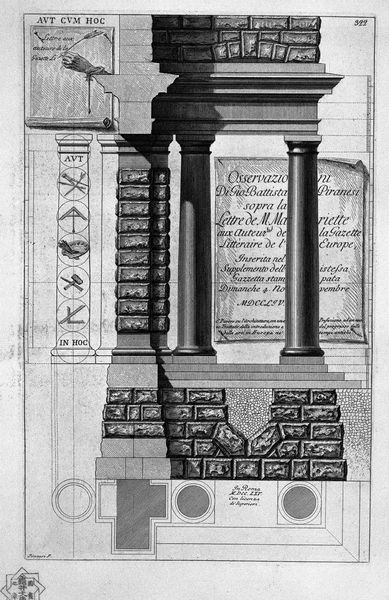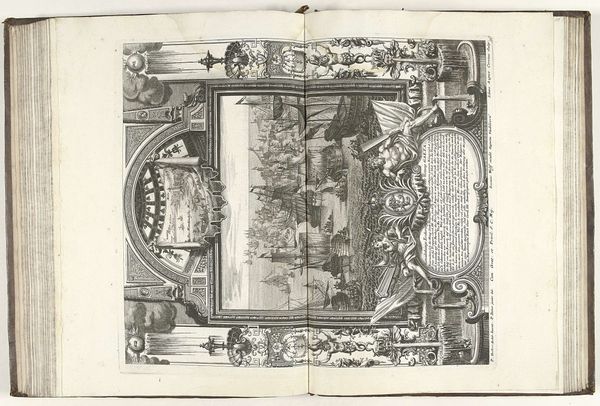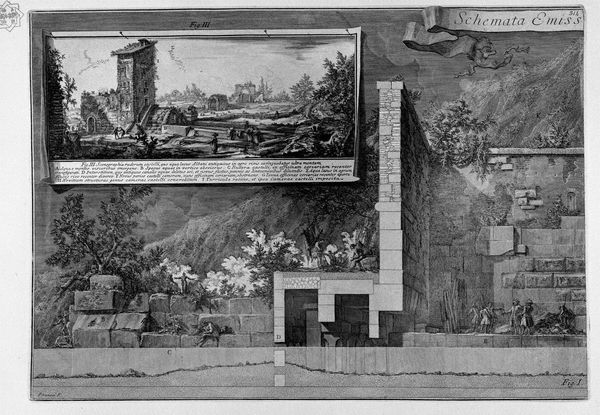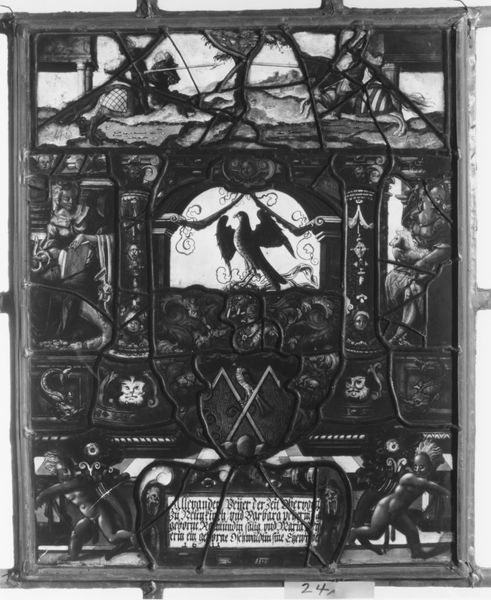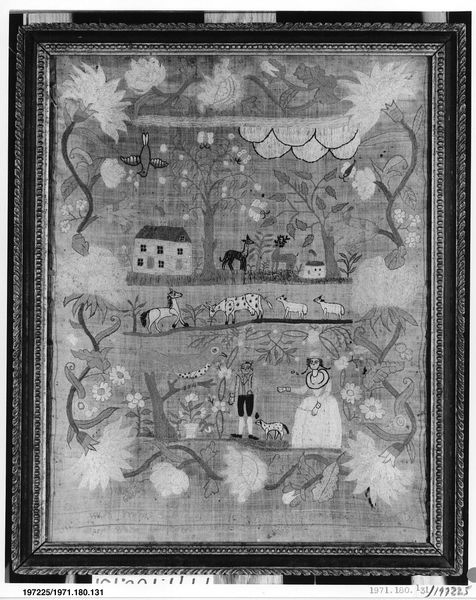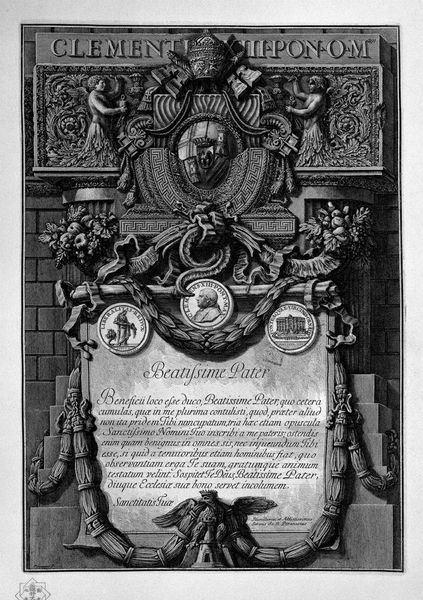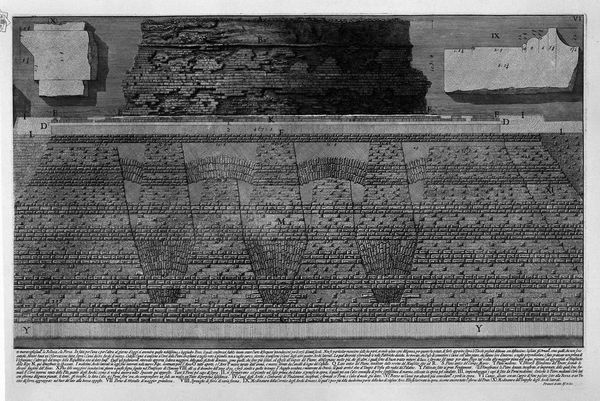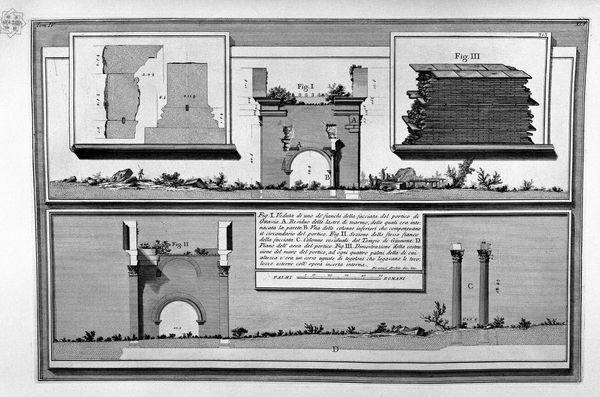
The Roman antiquities, t. 4, Plate LVI. Silvano remains of a Board of Aurelian.
0:00
0:00
engraving, architecture
#
sculpture
#
landscape
#
geometric
#
ancient-mediterranean
#
column
#
black and white
#
carved
#
line
#
history-painting
#
engraving
#
architecture
#
statue
Copyright: Public domain
Curator: This is Plate LVI from Giovanni Battista Piranesi's "The Roman Antiquities," an engraving depicting remains linked to the Collegio di Silvano Aureliano. The stark black and white palette immediately grabs your attention. What's your initial take on it? Editor: It strikes me as quite fragmented, almost archaeological. The different sections – the text blocks, the crumbling architecture, the distant landscape – are distinct, yet unified by Piranesi’s intense linework. It feels less like a single view and more like a collection of observations. How do you read that composition? Curator: Precisely. We can view it through the lens of structuralism. Note the stark contrasts: Light versus shadow, the crumbling ruins juxtaposed against the meticulous lettering. Piranesi uses line not only to depict form but also to create symbolic partitions, reflecting the fragmentary nature of history itself and its reconstruction through documentation. Observe how each section offers a discrete layer of meaning. Editor: So, the varying line weights and the different depths aren't just aesthetic choices, but ways of signalling how we're supposed to interpret each part? Curator: Indeed. Piranesi manipulates perspective and depth of field. The landscape, though appearing at the back, draws the eye – does it compete with the foreground? It's also a commentary on the relationship between inscription and the decaying architectural form: the triumph of text as preservation against physical destruction. Notice how the light catches the top tablet, while the landscape fades slightly; the artist uses dark and light in a clever way. Editor: That makes the layers feel even more pronounced. I see how he creates emphasis. I’d never considered line and shading could hold so much… symbolism. Curator: Exactly! A formalist reading, like this, reveals not just what is depicted but how the artist’s choices shape and direct our understanding. Editor: I'm definitely going to be paying closer attention to those formal relationships in future! Curator: It transforms your viewing experience, doesn't it? You start seeing the deliberate artistry.
Comments
No comments
Be the first to comment and join the conversation on the ultimate creative platform.
